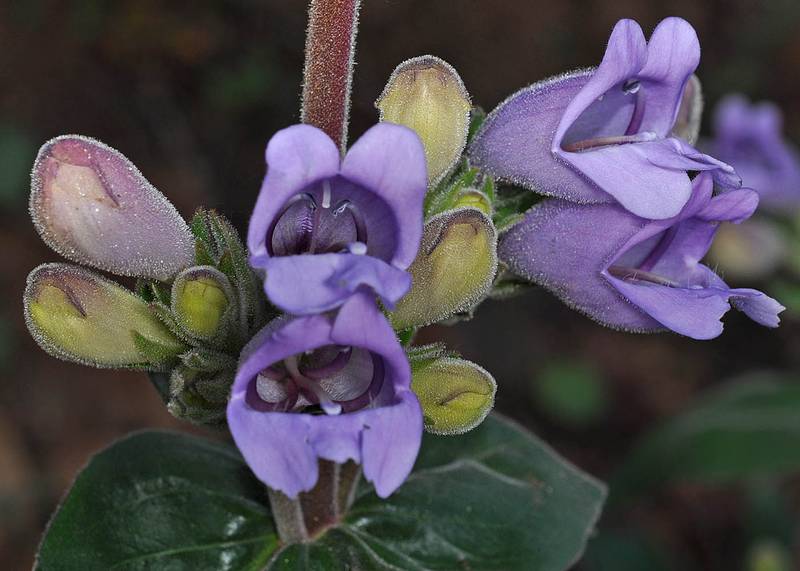Penstemon cardwellii
Penstemon glandulosus
Cardwell's beardtongue
glandular penstemon
Leaves opposite, glabrous, the largest on short, sterile shoots, serrulate or nearly entire, short-petiolate, the blades elliptic, 1.5-3.5 cm. long and 6-14 mm. wide;
leaves of the flowering shoots less crowded, smaller, sessile and entire.
Leaves opposite, sharply toothed or entire, the basal ones 10-35 cm. long and 2.5-9 cm. wide, petiolate, the blade lanceolate to elliptic; lowermost cauline leaves reduced, the others well-developed, sessile and often clasping, broadly lanceolate to rotund-ovate, 4-12 cm. long and 2-5 cm. wide.
Inflorescence racemose, few-flowered and crowded, glandular, the simple pedicels opposite and axillary;
calyx 5-12 mm. long, the 5 segments thin and lanceolate;
corolla bright purple to deep blue-violet, 30-38 mm. long, about 1 cm. wide at the mouth, keeled on the back, glabrous outside and with long, white hairs near the base of the lower lip within;
anthers long-wooly, pollen sacs opposite;
staminode slender, shorter than the 4 fertile filaments, long-bearded toward the tip
Inflorescence of several verticillasters;
calyx 9-15 mm. long, the 5 segments narrow and herbaceous;
corolla blue-lavender, strongly glandular-hairy outside, glabrous inside, 28-40 mm. long, over 1 cm. wide at the mouth;
anthers permanently horseshoe-shaped, 1.7-2.3 mm. long;
pollen sacs dehiscent across their apices, the lower part saccate and indehiscent, glabrous;
staminode glabrous, the tip flattened.
Capsule
Capsules 10-14 mm. long, surpassed by the calyx.



